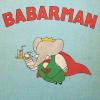RCT Discussion / Accolade Panel Paradigms
-
 24-April 25
24-April 25
-

 RobDedede
Offline
RobDedede
Offline
Hey all,
I'm posting this on the forum because I don't want it to get buried in the Discord. Basically, I'm stealing an idea from debate (shocker) and suggesting that we compile a database of accolade panelists' paradigms for how they rate and view parks. It could include things like how they give out scores, what aspects of RCT are most interesting to them, and what they consider necessary to achieve a spotlight or design award. I think this idea could easily be done on something like Google Sheets, and I would be happy to manage it if each accolade panelist wanted to write a brief paradigm (a page or less) explaining their thoughts about how they rate parks. I think this idea would alleviate some of the tension that is sometimes felt around the panel, which is a good rating system overall. Let me know what you all think!

-

 Terry Inferno
Offline
Terry Inferno
Offline
If the grass don't pop,
It ain't a spot.
If the rocks don't rock,
It ain't a spot.
And if you think right angles in landscapes are fine,
You and I disagree on what makes a Design.
I probably won't make mine into a full poem, but it will be interesting to explore this more in depth.
-

 Turtle
Offline
Turtle
Offline
Hi all, don't mind adding my thoughts here as an accolade panelist. I've only been a panelist for a short while relative to some, but i've seen a lot of RCT in my time.
My approach isn't a structured one. The crux of it is, "does this park deserve to be on the design page next to those parks, or the spotlight/gold/whatever page next to those". I think it's important to have a yardstick of quality relative to previous parks who have achieved a similar accolade. The tough part is that the quality level is always improving, so this is admittedly a subjective approach.
Personally I value a few different things in a map. Overall aesthetic (does this look good?), quality (what is the skill level on show?), innovation (are there new ideas that I haven't seen before?), effectiveness (have they achieved what they set out to achieve?), and consistency (are these things applied throughout the design?).
Very high marks in one category can overcome lower marks in another category to end somewhere in the middle. But for me, aesthetic is the most important thing. If it doesn't actually look good, it's unlikely that i'll score it very high.
I have rough mental guidelines on what is and isn't big enough to achieve certain accolades. These are based on historic guidelines set by the maps that have won those accolades before. But personally I see no problem with a smaller map winning spotlight, if the quality and aesthetics are good enough.
-

 deanosrs
Offline
deanosrs
Offline
Here are some things that come to mind for me:
-
Benchmarking Scores: Reviewing recent park scores to establish a standard for comparison.
-
Balancing Design: successful parks strike a balance. Detailed areas should contrast with simpler, open spaces. Designs can range from overly tidy and isometric to chaotic, object-heavy layouts that are visually striking but lack structure.
-
Macro: as we get more detailing added to parks, it's easy to forget how they look zoomed out as well.
-
Visual Appeal: Was the park enjoyable to explore visually?
-
Innovation: How much originality did the park demonstrate?
-
Scale vs. Quality: The park's size matters, but it’s a delicate balance with quality. Larger maps don’t always equate to better parks.
-
Sound Design: a lot of builders put in huge effort here and it can transform the feel of a park.
I haven’t yet voted "yes" for a Spotlight accolade. For me, Spotlight is reserved for parks that reflect significant thought, effort, and time investment. This could involve multiple builders working over a shorter period.
-
Map Size and Quality: Larger maps don’t alone improve a park’s merit, although it does give builders more space to impress and show different themes. Smaller maps with dense, high-quality detailing can still excel. Large areas like car parks or lakes reduce the effective content too. I've found that if a park is smaller than 125x125 or so, it can get really tough to show what I think a spotlight should have.
-
Diversity: A Spotlight park should showcase variety in its design. This is why H2H parks, which often focus on a single theme, rarely meet the Spotlight threshold for me. While they can be exceptional, their lack of diversity makes it challenging (not impossible) to earn spotlight.
-
A Benchmark: if in my eyes a park sets new benchmarks for quality, that's a part of it. Age of Sail and Belle Isle are the two in recent memory that demand all future parks in those styles be compared to them.
-
-

 Babar Tapie
Offline
Babar Tapie
Offline
Nice topic !
My pov :
I rarely rate design submissions
I make a distinction between creation and imagination when rating parks. These are the 2 axes of my rating, with great importance given to the imagination part.
-Creation: the way you build something from a technical point of view (a building, a station, etc.).
-Imagination: the way you design a park. This includes theme choices, the way a building or element is designed, the general idea behind the park, artistic choices (artistic direction), the ‘touch’. Basically, thinking outside the box.
It's a very personal reflection, but I find that on NE we have some very good technicians, but a lot of people who stay within the classic patterns of a park: same choice of themes, release of big franchises (Disney, Six Flags, etc. etc.). Why don't people try to create their own franchise? Or try something ambitious and unusual? Or fantasy park? Imo It's a bit sad to see different things mainly at H2H.
To finish, I don't expect the same from a legendary parkmaker as I do from an untitled player or a NE parkmaker. For the second category, if I see that the player has made great progress between his park and his previous work, I won't hesitate to give him a higher score, even if the quality is a little lower than what we usually see. I try to be as flexible as possible.
-

 RWE
Offline
RWE
Offline
Helped by AI analyzing some of my reviews i gathered these are the things i think about the most when voting:
Atmosphere and Vibe:
A strong, cohesive atmosphere matters a lot to me. I appreciate parks that create an engaging, consistent vibe that invites the viewer in. When voting i usually start with thinking about this and it has a lot to do with immersivity and gut feeling. While I appreciate technical skills (object usage, layering, micro details), they aren't everything to me. I put more weight on artistic vision and the overall visual and emotional impact than on technical complexity alone.
Creativity and Risk-Taking:
I reward parks that take creative risks, even if they don't perfectly execute them. Bold, unconventional ideas, odd ride choices, or weird artistic styles that are committed to consistently impress me. But, out-of-place objects or textures that don't fit the game visually can also break immersion and harm otherwise good areas as well.
Visual Structures:
Strong macro layout and good overall map flow matter. Even if individual areas are great, poor large-scale organization can hurt my overall impression. Effective use of empty spaces is important. Parks don’t need to fill every inch – allowing areas to breathe can enhance readability and pacing. Maps that feel too cramped or chaotic tend to lose my interest quickly.I pay close attention to coaster layouts and how well they are integrated into the map. A strong coaster layout alone is not enough; it needs to interact well with the surroundings and support the overall park experience.
Coasters and all other elements on the map need to be placed with the peep perspective in mind. Sightlines are crucial for that. A well-planned park ensures that peeps have interesting views and pathways that feel immersive and connected.
Deep Structures:
Good foliage and landscaping are crucial. I value thoughtful placement, natural transitions, and a fitting balance between foliage and rockwork. Random or "sprinkled-on" foliage without variety can break immersion for me.
I'm a big fan of parks that pay attention to the small stuff – little peep scenes, naming, hidden touches, clever object use. Tiny details that feel natural and fit the vibe can make a map come alive and leave a lasting impression.I love when parks don't take themselves too seriously. Sometimes it's the quirky, fun, or offbeat elements that make a map stand out. Parks can be fun, whimsical, and a bit wild, and they don’t always have to fit a rigid idea of what’s considered meta. Sometimes, the more lighthearted approach makes the experience more enjoyable.
-

 MrTycoonCoaster
Offline
MrTycoonCoaster
Offline
yes Turtle: "The tough part is that the quality level is always improving"
"Personally I value a few different things in a map. Overall aesthetic (does this look good?), quality (what is the skill level on show?), innovation (are there new ideas that I haven't seen before?), effectiveness (have they achieved what they set out to achieve?), and consistency (are these things applied throughout the design?). " -

 MrTycoonCoaster
Offline
MrTycoonCoaster
Offline
Nice topic !
My pov :
I rarely rate design submissions
I make a distinction between creation and imagination when rating parks. These are the 2 axes of my rating, with great importance given to the imagination part.
-Creation: the way you build something from a technical point of view (a building, a station, etc.).
-Imagination: the way you design a park. This includes theme choices, the way a building or element is designed, the general idea behind the park, artistic choices (artistic direction), the ‘touch’. Basically, thinking outside the box.
It's a very personal reflection, but I find that on NE we have some very good technicians, but a lot of people who stay within the classic patterns of a park: same choice of themes, release of big franchises (Disney, Six Flags, etc. etc.). Why don't people try to create their own franchise? Or try something ambitious and unusual? Or fantasy park? Imo It's a bit sad to see different things mainly at H2H.
To finish, I don't expect the same from a legendary parkmaker as I do from an untitled player or a NE parkmaker. For the second category, if I see that the player has made great progress between his park and his previous work, I won't hesitate to give him a higher score, even if the quality is a little lower than what we usually see. I try to be as flexible as possible.
YES "It's a very personal reflection, but I find that on NE we have some very good technicians, but a lot of people who stay within the classic patterns of a park: same choice of themes, release of big franchises (Disney, Six Flags, etc. etc.). Why don't people try to create their own franchise? Or try something ambitious and unusual? Or fantasy park? Imo It's a bit sad to see different things mainly at H2H."
-

 MrTycoonCoaster
Offline
MrTycoonCoaster
Offline
Helped by AI analyzing some of my reviews i gathered these are the things i think about the most when voting:
Atmosphere and Vibe:
A strong, cohesive atmosphere matters a lot to me. I appreciate parks that create an engaging, consistent vibe that invites the viewer in. When voting i usually start with thinking about this and it has a lot to do with immersivity and gut feeling. While I appreciate technical skills (object usage, layering, micro details), they aren't everything to me. I put more weight on artistic vision and the overall visual and emotional impact than on technical complexity alone.
Creativity and Risk-Taking:
I reward parks that take creative risks, even if they don't perfectly execute them. Bold, unconventional ideas, odd ride choices, or weird artistic styles that are committed to consistently impress me. But, out-of-place objects or textures that don't fit the game visually can also break immersion and harm otherwise good areas as well.
Visual Structures:
Strong macro layout and good overall map flow matter. Even if individual areas are great, poor large-scale organization can hurt my overall impression. Effective use of empty spaces is important. Parks don’t need to fill every inch – allowing areas to breathe can enhance readability and pacing. Maps that feel too cramped or chaotic tend to lose my interest quickly.I pay close attention to coaster layouts and how well they are integrated into the map. A strong coaster layout alone is not enough; it needs to interact well with the surroundings and support the overall park experience.
Coasters and all other elements on the map need to be placed with the peep perspective in mind. Sightlines are crucial for that. A well-planned park ensures that peeps have interesting views and pathways that feel immersive and connected.
Deep Structures:
Good foliage and landscaping are crucial. I value thoughtful placement, natural transitions, and a fitting balance between foliage and rockwork. Random or "sprinkled-on" foliage without variety can break immersion for me.
I'm a big fan of parks that pay attention to the small stuff – little peep scenes, naming, hidden touches, clever object use. Tiny details that feel natural and fit the vibe can make a map come alive and leave a lasting impression.I love when parks don't take themselves too seriously. Sometimes it's the quirky, fun, or offbeat elements that make a map stand out. Parks can be fun, whimsical, and a bit wild, and they don’t always have to fit a rigid idea of what’s considered meta. Sometimes, the more lighthearted approach makes the experience more enjoyable.
yes...
Atmosphere and Vibe:Creativity and Risk-Taking:Visual Structures:Deep Structures:
 Tags
Tags
- No Tags
